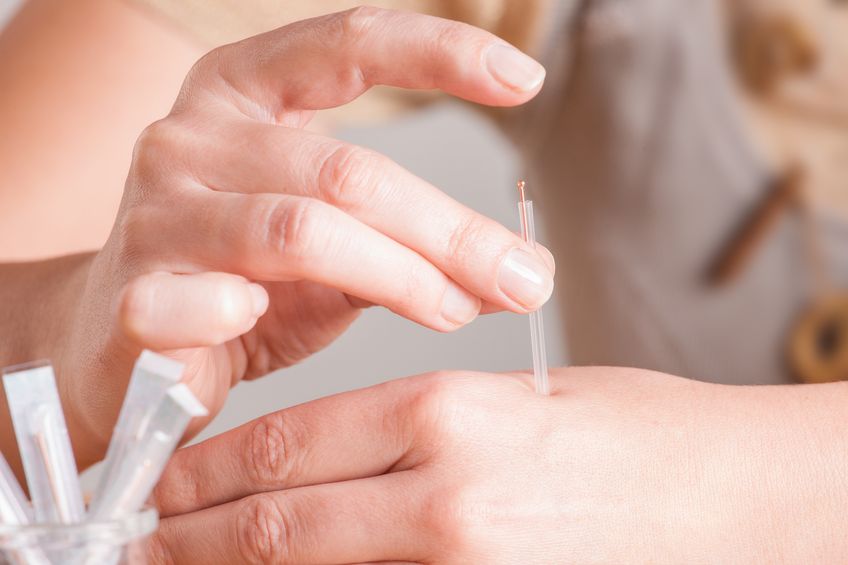
The study was conducted over the course of a 1-year period at the Fattouma Bourguiba University Hospital in Tunisia, a tertiary care facility with over 100,000 Emergency Department (ED) visits per year.
300 ED patients with acute pain were included in the study: 150 in the morphine group (administered up to 15 mg a day) and 150 in the acupuncture group. The two groups were comparable in terms of age, sex, and co-morbidities, with the only significant difference being that there were more abdominal pain patients in the morphine group and more low back pain cases in the acupuncture group.
The striking results were reported as follows:
“Success rate was significantly different between the 2 groups (92% in the acupuncture group vs 78% in the morphine group P b .01). Resolution time was 16 ± 8 minutes in the acupuncture group vs 28 ± 14 minutes in the morphine group. The difference was statistically significant (P b .01). The mean absolute difference in pain score between the 2 groups was 7.7. This difference is not clinically significant because the minimal clinically significant absolute difference reported by Todd et al is 13. In morphine group, the mean total dose of morphine administered was 0.17 ± 0.08 mg/Kg (Table 2).
The pain scale change from baseline at each time point in the 2 groups is shown in Figure. From the 5-minute time point, the acupuncture group reported significantly larger pain decrease compared with the morphine group. This difference persisted during the entire study period. Change of blood pressure, HR, RR, and oxygen saturation was not significant in both groups.
Overall, 89 patients (29.3%) experienced minor adverse effects: 85(56.6%) in morphine group and 4 (2.6%) in acupuncture group; the difference was significant between the 2 groups (Table 3). The most frequent adverse effect was dizziness in the morphine group (42%) and needle breakage in the acupuncture group (2%). No major adverse effect was recorded during the study protocol. (See Table 4.)”
In short, the acupuncture group saw a great pain-relieving effect, which occurred faster, with significantly less side effects.

A graph from the study showing the pain-decreasing differences between morphine and acupuncture
Discussion
Since 1996, the World Health Organization has recognized acupuncture as a safe and effective therapy for the treatment of a wide range of conditions, including pain and discomfort.1 Despite this, the use of acupuncture within the conventional standard of care is still exceedingly rare. A deep skepticism exists for therapeutic modalities that do yet have a clearly characterized mechanism of action, as defined through conventional biomedical understanding and terminology. Often, in lieu of this, its therapeutic effects are written off as merely “placebo.”
Placebo, however, is not as diminutive term as it may first seem. The placebo effectactually reflects the deep power and regenerative capability of the body-mind to heal itself. And since its power translates directly into real, measurable improvements in terms of clinical outcomes, it does not matter if we fully understand “how” it works. Also, consider that “evidence-based” (EB) medicine not only depends entirely on clinical outcomes as final proof of an intervention’s efficacy, but also, the entire EB medicine model depends on “controlling” for the placebo effect, as it is already tacitly recognized as having immense power in influencing the outcomes in most interventions. And so, whether or not a fully known or plausible “mechanism of action” has been identified is secondary in importance to whether it works or not in clinical practice.
Acupuncture happens to be one of the most extensively supported alternative modalities, with clinical trial data supporting its value in over 100 different conditions. If you do a pubmed.gov search you’ll find over 6,700 published studies related to the keywords “pain” and “acupuncture.” You can view the primary literature we have gathered on the topic on the GreenMedInfo.com Acupuncture portal:
Click to access the Acupuncture Database on GreenMedInfo.com
Clearly the new study reveals that acupuncture has a powerful role to play in pain management. With addiction to pain relieving drugs affecting millions around the world, acupuncture is perfectly poised to provide patients a time-tested, drug-free alternative. As you can see from the study’s graph, the adverse effects comparison is staggeringly in favor of acupuncture as the safer modality.

Finally, here are the study’s powerful conclusions:
Our study demonstrated that in patients with acute pain syndromes presenting to the ED, acupuncture is at least as efficacious and has a better safety profile than IV morphine. The results of this study suggest that acupuncture has a potential role in controlling acute pain conditions presenting to EDs and appears to be safe and effective. Future studies should be performed in international populations. “
For additional research on natural pain relief options visit our database on the topic:
Click to access the Pain Database on GreenMedInfo.com
References
1 World Health Organization. Acupuncture: review and analysis of reports on controlled clinical trials; 2002.
Disclaimer: We at Prepare for Change (PFC) bring you information that is not offered by the mainstream news, and therefore may seem controversial. The opinions, views, statements, and/or information we present are not necessarily promoted, endorsed, espoused, or agreed to by Prepare for Change, its leadership Council, members, those who work with PFC, or those who read its content. However, they are hopefully provocative. Please use discernment! Use logical thinking, your own intuition and your own connection with Source, Spirit and Natural Laws to help you determine what is true and what is not. By sharing information and seeding dialogue, it is our goal to raise consciousness and awareness of higher truths to free us from enslavement of the matrix in this material realm.
 EN
EN ES
ES FR
FR PT
PT NL
NL DE
DE RU
RU SL
SL SV
SV TR
TR



























No doubt this ancient Way of treatment is beyond words.
Oh thanks. Beautiful! Gonna share this of course.